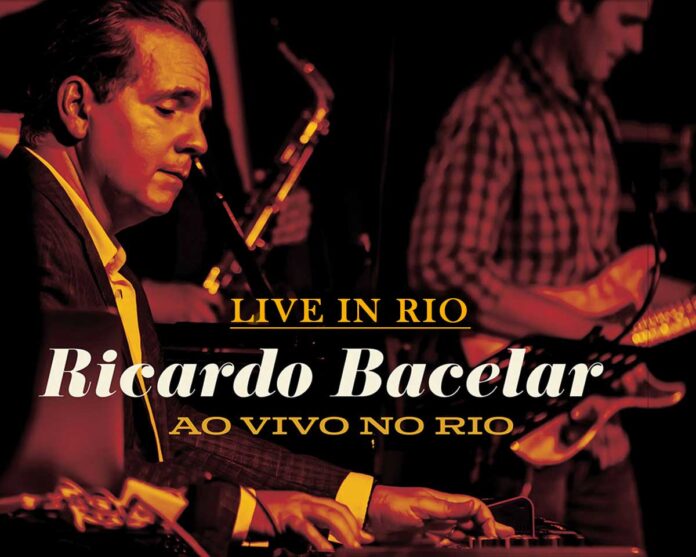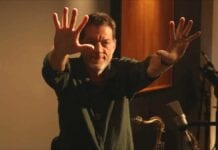Ricardo Bacelar – Live In Rio (Ao Vivo No Rio) didn’t start with the beach districts of Copacabana or Ipanema. The story begins 1,400 miles north – and worlds away – in the Brazilian jazzman’s hometown, Fortaleza.
By Sean Chaffin
Here, the azure-blue waters of the tropical Atlantic are crystal clear, making them an irresistible destination for divers from around the world. Ten nautical miles off coast lies the protected underwater marine area called Pedra da Risca do Meio.
Not your style? Back on land, you can explore the third-largest aquarium in the world.
It’s said that Spanish explorer Vicente Pinzón sailed these same waters in February of 1500, but it was the Portuguese who came to stay. They bult a small encampment, battled with the French and then with the Dutch, who ultimately built the fort that gave the city its name.
Fortaleza is Brazil’s fifth-largest city and capital of the northeastern state of Ceará. It offers countless cultural and heritage sites, ecological reserves, an excellent regional cuisine and more than 16 miles of urban beaches.
It turns out that Ricardo Bacelar’s hometown is the second-most desirable tourist destination in Brazil, and the quality of life is among the country’s best.
Life here is refreshingly different from the mega-metropolises to the south. Casual, in tune. You can breathe. It’s elemental.
And it’s your first hint at what awaits you with Ricardo Bacelar – Live In Rio (Ao Vivo No Rio).
- Daily, October 4-10: Visit Connect Brazil’s Picture of the Day for a 7-day tour of Ricardo Bacelar’s Fortaleza.
Unique Nature
In the northeast, just above the country’s “hump” jutting out into the Atlantic, Fortaleza is located well apart from the bustling Brazilian south, and over time the region has developed its own tropical sounds.
Growing up in Fortaleza, pianist Ricardo Bacelar understands this musical osmosis first-hand. Rio has Samba and Carnaval. The northeast has Forró and a musical culture all its own.
“Here in Ceará, we have quite different rhythms compared to Rio,” the 53-year-old musician says. “Northeastern music is sometimes similar to Blues because it brings out all this sorrow from within.
“Luiz Gonzaga, in my opinion, is the greatest Blues musician in Brazil because he could bring out great sorrow, mourning, and feelings of homesickness and tenderness. The northeast has very original musical features – rich and full of musical textures.”
Outside of Brazil, new fans are beginning to appreciate Ricardo Bacelar’s own rich, musical tapestry – from Blues, Rock and Classical to Brazilian jazz, Bossa Nova, LATAM styles and beyond.
While some of his work trends in one direction, other efforts like 2018’s Sebastiana offer a range of sounds, styles and focus. This mix of regional influences with jazz sensibilities make for an inviting listen that always surprises.
Musical Melting Pot
Fortaleza of the 1960s and ‘70s created a strong musical movement. Traditional northeastern sounds like the Afro-Brazilian Maracatu, Samba, Bossa Nova and Sertão (country music of the Brazilian northeast) collided and combined.
Artists composed songs with poetic lyrics and the emerging styles of nearby Bahia added to this unique, cultural cocktail.
These formative years became Bacelar’s musical education. His father was an amateur jazz pianist and his mother played guitar. Jazz, Brazilian, American pop and folk music were always part of Ricardo Bacelar’s middle-class household.
“In my grandpa’s house, where I grew up, there were two pianos and lots of members of the family were musicians,” Bacelar recalls. “I grew up with these jam sessions in the living room.”
As a child, his father played the piano while Bacelar sat on his lap, taking in the music. The young boy’s own fingers soon graced those same keys and his early influences included classical composers Bach and Debussy as well as Brazilian pianist Egberto Gismonti.
American pianists and composers Keith Jarrett and Chick Corea also served as inspiration as well as Brazilian artists Antonio Carlos Jobim, Gilberto Gil, and Caetano Veloso.
By age 14, Ricardo Bacelar knew music would be a major part of his life. At that early age, he was already playing with professional studio musicians, on and off the road.
He was recruited into the popular Brazilian rock band Hanói Hanói in the ‘80s and ‘90s. When that ended, Bacelar moved on, ready to embrace some of his own musical choices.
“Being part of a band means you can’t do whatever you want because you are part of the whole, a group,” he says. “Going solo meant I could perform the music I wanted to.”
- Daily, October 4-10: Listen to The Sounds of Brazil’s weekly show for The Musical World of Ricardo Bacelar on our streaming station, WDCB and affiliates.
Growing Discography
Bacelar’s first album, In Notura,was released in 2001 and strikes a classical feel infused with traditional and Latin jazz. A light and understated tone includes some Blues as well.
Concerto Para Moviola (2016) offers an enticing blend of sounds: from traditional Bossa Nova mixed with Smooth Jazz, to Classical, Blues and even some Mediterranean vibes.
Sebastiana followed two years later, building on Bacelar’s Fortaleza roots, and a wealth of multicultural experience.
Ricardo Bacelar – Live In Rio (Ao Vivo No Rio) is his latest recording, bringing us a more traditional blend of Bossa Nova and Latin jazz. Up-tempo melodies contrast with the relaxed, tropical feel of an evening at a Brazilian nightclub. His efforts run the gamut and allow for plenty of creativity.
“I don’t like to define an album from the beginning,” he says. “The album begins and keeps beginning. Sometimes you start with some concepts, but music comes from creativity. I love to test and experience all the sounds.
“I’ve always had this bias toward Latin jazz and Bossa Nova. I think it’s been with me since I was a boy.”
In the U.S., Sebastiana promptly found its following with jazz and Brazilian music fans, bolstered with radio play and insightful reviews which mirrored the artist’s vision of a true, Pan-American soundtrack.
But this album, Ricardo Bacelar – Live In Rio, has greater plans. The Brazilian jazzman is hoping to reach even more American fans as soon as the opportunity comes.
When COVID-19 subsides, he has plans to perform stateside in support of his work – bringing his mixture of sounds to American fans so they can experience the same ‘live’ energy and emotion you can tap into today, with the album.
“I think this eclectic set of influences brings out all these flavors you can mix together to make a good stew,” Bacelar says. “I took a sip of water from multiple streams and they all became part of myself.”
Get to know Brazilian pianist Ricardo Bacelar
Follow Ricardo Bacelar on
Facebook | YouTube | Instagram | Twitter
Amazon | Apple Music | Google Play | Spotify | Deezer | Tidal
An Editor and Senior Writer at Connectbrazil.com, Sean Chaffin is also a freelance writer based in Crandall, Texas. His love of Brazilian music and culture is infectious and he’s been known to drive long hours in search of the perfect beach.
- Sign up for our emails on music, travel, friends and fun. Click here to like our Facebook page and here for Brazilian events coast to coast.









